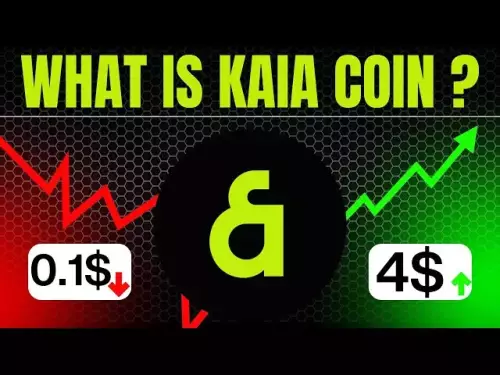-
 bitcoin
bitcoin $112715.707551 USD
-1.71% -
 ethereum
ethereum $4101.475385 USD
-3.01% -
 tether
tether $1.000644 USD
-0.02% -
 bnb
bnb $1207.619465 USD
-6.77% -
 xrp
xrp $2.501451 USD
-3.98% -
 solana
solana $202.947124 USD
-3.32% -
 usd-coin
usd-coin $1.000295 USD
0.04% -
 dogecoin
dogecoin $0.203884 USD
-4.47% -
 tron
tron $0.317154 USD
-1.72% -
 cardano
cardano $0.695009 USD
-4.43% -
 hyperliquid
hyperliquid $38.853961 USD
-8.23% -
 chainlink
chainlink $18.988674 USD
-4.64% -
 ethena-usde
ethena-usde $1.000233 USD
-0.03% -
 stellar
stellar $0.337050 USD
-3.63% -
 bitcoin-cash
bitcoin-cash $536.861728 USD
-1.28%
How to find undervalued cryptocurrencies?
"Undervalued cryptocurrencies often have strong fundamentals but low market prices, offering potential opportunities for informed investors."
Jul 13, 2025 at 11:00 am

Understanding the Concept of Undervalued Cryptocurrencies
Identifying undervalued cryptocurrencies involves more than just scanning price charts or following social media hype. An undervalued crypto asset is one whose current market price does not reflect its true potential or intrinsic value. This discrepancy can occur due to a variety of reasons such as low market awareness, lack of marketing, or temporary negative sentiment.
To begin with, it’s essential to understand the difference between market price and intrinsic value. The market price is what investors are currently willing to pay, while intrinsic value is derived from fundamental metrics like utility, adoption rate, team strength, and technological innovation. When these two diverge significantly, it creates an opportunity for savvy investors.
Conducting Fundamental Analysis on Crypto Projects
One of the most reliable methods to identify undervalued cryptocurrencies is through fundamental analysis. This involves evaluating the core components of a project, including its whitepaper, team credentials, roadmap, and real-world use cases.
Start by reviewing the project’s whitepaper, which should clearly outline the problem it aims to solve and how its blockchain-based solution is unique or superior to existing alternatives. A well-researched whitepaper with detailed technical specifications and a clear tokenomics model is a positive sign.
Next, examine the team behind the project. Look for experienced developers, advisors with industry expertise, and active community engagement. Projects with transparent team members who have a track record in blockchain development or relevant industries tend to be more credible.
Assessing On-Chain and Off-Chain Metrics
Beyond qualitative analysis, on-chain metrics provide valuable insights into the health and activity of a blockchain project. Tools like Dune Analytics, Glassnode, and Santiment allow users to track data such as wallet growth, transaction volume, network fees, and token velocity.
For instance, a rising number of active wallets could indicate growing adoption, even if the price hasn’t reflected it yet. Similarly, increasing transaction volume might suggest that the network is being used more frequently, which is a strong indicator of organic growth.
Off-chain metrics also play a crucial role. These include social media engagement, GitHub activity, and media coverage. A project with consistent code updates on GitHub and a growing presence on platforms like Twitter or Telegram may signal a healthy and developing ecosystem.
Evaluating Tokenomics and Market Cap
Tokenomics refers to the economic model behind a cryptocurrency. It includes factors such as token supply (total, circulating, and max supply), inflation rate, staking rewards, and distribution mechanisms.
A key metric to consider is the fully diluted market cap (FDV). FDV estimates what the market cap would be if all tokens were in circulation. Comparing FDV to the current market cap can reveal whether a token is potentially overvalued or undervalued.
For example, a project with a low current market cap but a high FDV may indicate that many tokens are yet to be released, which could dilute value over time. Conversely, a project with a low FDV and limited supply might be undervalued if the fundamentals support future demand.
Monitoring Emerging Trends and Niche Markets
Many undervalued cryptocurrencies operate in emerging or niche markets that have not yet gained mainstream attention. These include privacy coins, decentralized identity solutions, or niche DeFi protocols.
By staying updated on regulatory developments, technological advancements, and macroeconomic trends, investors can spot opportunities before they become widely recognized. For instance, regulatory clarity in certain jurisdictions might unlock new use cases for specific blockchain projects, increasing their value proposition.
Additionally, tracking new blockchain networks or Layer 2 solutions can offer early access to projects with strong fundamentals. Many of these newer chains have native tokens with low market caps, making them potential candidates for undervaluation.
Using Technical Analysis as a Supplement
While fundamental analysis gives insight into the long-term potential of a crypto project, technical analysis helps identify optimal entry points. Using tools like moving averages, RSI, and volume indicators, investors can determine whether a cryptocurrency is oversold or overbought.
For example, if a project has strong fundamentals but its price has been declining for several weeks with low trading volume, it might be oversold and due for a rebound. On the other hand, a sharp price spike without corresponding fundamental news could indicate a speculative bubble.
Combining technical and fundamental analysis provides a more holistic view of whether a cryptocurrency is truly undervalued or simply experiencing short-term volatility.
FAQs
Q: What is the difference between undervalued and under-the-radar cryptocurrencies?A: Undervalued cryptocurrencies are those whose market price does not reflect their intrinsic value, often due to overlooked fundamentals. Under-the-radar cryptocurrencies are lesser-known projects that may or may not be undervalued but are simply not widely recognized or traded.
Q: Can stablecoins ever be considered undervalued?A: Stablecoins are designed to maintain a fixed value relative to a fiat currency like the US dollar, so the concept of being undervalued doesn’t typically apply. However, algorithmic stablecoins with flawed mechanisms might trade below their peg temporarily, creating short-term arbitrage opportunities rather than long-term undervaluation.
Q: How important is community sentiment in identifying undervalued crypto projects?A: Community sentiment can be a useful indicator of a project’s potential. Strong, active, and supportive communities often reflect developer commitment and user engagement, which are key components of long-term value. However, sentiment alone shouldn’t be the sole factor in determining undervaluation.
Q: Are older cryptocurrencies more likely to be undervalued than newer ones?A: Not necessarily. While older cryptocurrencies may have proven track records, they can also be overvalued due to hype or speculation. Conversely, newer projects with strong fundamentals may be undervalued due to lack of awareness. The key is to evaluate each project based on its merits and data, not just its age.
Disclaimer:info@kdj.com
The information provided is not trading advice. kdj.com does not assume any responsibility for any investments made based on the information provided in this article. Cryptocurrencies are highly volatile and it is highly recommended that you invest with caution after thorough research!
If you believe that the content used on this website infringes your copyright, please contact us immediately (info@kdj.com) and we will delete it promptly.
- Coinbase and CoinDCX: Navigating the Crypto Exchange Landscape in 2025
- 2025-10-15 13:05:16
- Elon Musk, Dogecoin, and the Elusive Rally: What's the Deal?
- 2025-10-15 12:25:13
- Jamaica, ILO Principles, and Labour Commitment: Navigating a Changing World
- 2025-10-15 13:05:16
- Xbox One Controller Stick Drift: Causes, Fixes, and Prevention
- 2025-10-15 13:10:02
- GROK999K: The AI-Powered Crypto Revolutionizing Blockchain Intelligence
- 2025-10-15 13:10:02
- BTC, ETH, and Crypto Presales: Navigating the Storm with MoonBull & LivLive
- 2025-10-15 11:05:13
Related knowledge

Practical parameter settings for a Bitcoin multi-timeframe moving average system
Sep 18,2025 at 10:54pm
Optimizing Timeframe Combinations for Bitcoin Trading1. Selecting appropriate timeframes is crucial when building a multi-timeframe moving average sys...

How can I filter out false breakouts in Dogecoin high-frequency trading?
Sep 22,2025 at 01:00am
Understanding False Breakouts in Dogecoin Trading1. A false breakout occurs when Dogecoin's price appears to move beyond a defined support or resistan...

Techniques for identifying tops and bottoms in the Bitcoin on-chain NVT model
Sep 20,2025 at 07:54pm
Understanding the NVT Model in Bitcoin Analysis1. The Network Value to Transactions (NVT) ratio is often described as the 'P/E ratio' of the cryptocur...

What does the surge in open interest in Bitcoincoin futures mean?
Sep 20,2025 at 11:18pm
Understanding the Surge in Dogecoin Futures Open Interest1. A surge in open interest within Dogecoin futures indicates a growing number of active cont...

How can I use the Ethereum USDT premium to gauge market sentiment?
Sep 18,2025 at 11:55pm
Understanding the Ethereum USDT Premium1. The Ethereum USDT premium refers to the price difference between USDT (Tether) traded on Ethereum-based plat...

What should I do if Ethereum staking yields decline?
Sep 20,2025 at 06:18am
Understanding the Causes Behind Declining Ethereum Staking Yields1. The Ethereum network transitioned to a proof-of-stake consensus mechanism with the...

Practical parameter settings for a Bitcoin multi-timeframe moving average system
Sep 18,2025 at 10:54pm
Optimizing Timeframe Combinations for Bitcoin Trading1. Selecting appropriate timeframes is crucial when building a multi-timeframe moving average sys...

How can I filter out false breakouts in Dogecoin high-frequency trading?
Sep 22,2025 at 01:00am
Understanding False Breakouts in Dogecoin Trading1. A false breakout occurs when Dogecoin's price appears to move beyond a defined support or resistan...

Techniques for identifying tops and bottoms in the Bitcoin on-chain NVT model
Sep 20,2025 at 07:54pm
Understanding the NVT Model in Bitcoin Analysis1. The Network Value to Transactions (NVT) ratio is often described as the 'P/E ratio' of the cryptocur...

What does the surge in open interest in Bitcoincoin futures mean?
Sep 20,2025 at 11:18pm
Understanding the Surge in Dogecoin Futures Open Interest1. A surge in open interest within Dogecoin futures indicates a growing number of active cont...

How can I use the Ethereum USDT premium to gauge market sentiment?
Sep 18,2025 at 11:55pm
Understanding the Ethereum USDT Premium1. The Ethereum USDT premium refers to the price difference between USDT (Tether) traded on Ethereum-based plat...

What should I do if Ethereum staking yields decline?
Sep 20,2025 at 06:18am
Understanding the Causes Behind Declining Ethereum Staking Yields1. The Ethereum network transitioned to a proof-of-stake consensus mechanism with the...
See all articles


























![Staking ATH: How To Stake $ATH in October 2025 with 523% APY — [Step-By-Step Guide] Staking ATH: How To Stake $ATH in October 2025 with 523% APY — [Step-By-Step Guide]](/uploads/2025/10/15/cryptocurrencies-news/videos/staking-ath-stake-ath-october-apy-stepstep-guide/68eef94d80903_image_500_375.webp)















































